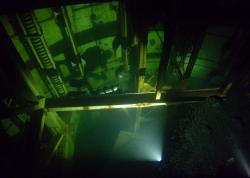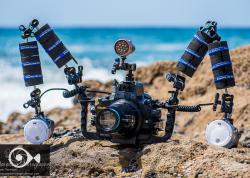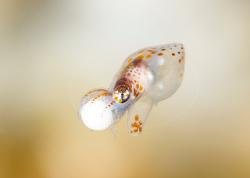An Interview with PT Hirschfield

PT Hirschfield is not only an underwater adventurer but also a world-renowned underwater photographer. She has won lots of underwater photo contest and also likes to share her passion with photography thru her website and other social media. Check out her other photos and videos of her adventure.
Blog: www.pinktankscuba.com
Facebook: https://www.facebook.com/pinktankscuba/
YouTube: Pink Tank Scuba
Instagram: https://www.instagram.com/pinktankscuba/
An Interview with PT Hirschfield
1. Is there anything you would like to add to your story behind your winning Ocean Art photo?
I’ve been very lucky to have had multiple images awarded places in the Ocean Art Underwater Photography competition each year that I’ve entered since 2018. I’ve found that the subjects I dive with most often - the Great Australian Spider Crabs, seahorses, weedy seadragons and local fish species that inhabit Australia’s Port Phillip and Westernport Bays - are the ones I’ve photographed most successfully. Sheer number of hours in the water with these species increases both opportunity to witness exciting behaviours and to try to capture those behaviours in new ways. It took me over 1400 dives before I managed to capture a female seahorse transferring the next generation of pretty ponies into the pouch of the male. I take many hundreds of underwater images that I would never show anyone. Without exception, the moment I pressed the trigger on the images that succeeded in the Ocean Art competition, I knew without doubt that THIS was the image I was going to submit in the next round of competition. It’s like releasing a bowling ball and knowing that THIS ball has the potential to achieve a strike. It’s a rare feeling when it all comes together underwater in a different way to what I’ve photographed or seen photographed before, making for some of the most joyous moments of my life.
2. What camera equipment do you use? Do you have a favourite photographic technique?
Since I started diving in 2010, I’ve been using a (now very obsolete) Canon G12 compact camera in a (discontinued) Recsea housing. I use a single YSD3 Sea&Sea Strobe and my preferred dive light is a (defunct) FixNeo 1500. I had a few people tell me along the way that no-one would ever take my photography seriously unless I upgraded to a DSLR. But compact cameras have come a long way and mine does what I want it to do with maximum versatility, though it’s definitely starting to ‘age-out’. I write regular magazine columns and feature articles for Dive Log Australasia and Scuba Diver ANZ which are also often accompanied by my images. While the resolution might not blow up optimally to billboard size, I’ve shot quite a few magazine covers and many story images using my trusty compact camera system. And I can synch the strobe to 1/250 and beyond which makes sharp sunbursts and black backgrounds very easy to achieve.
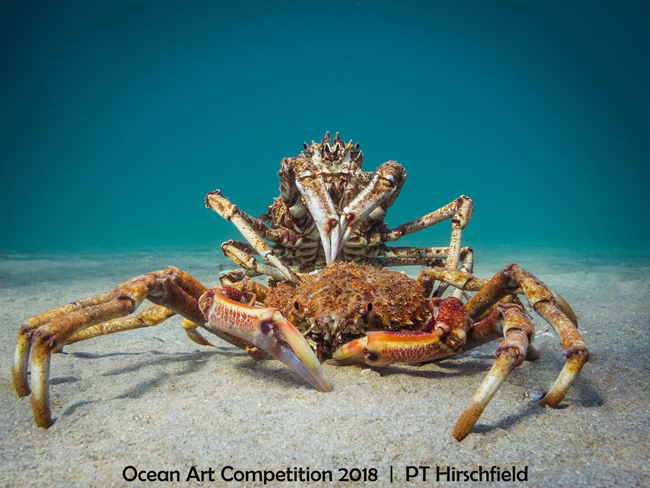
3. How did you get into diving and underwater photography?
I had almost a decade between my original try-dive on Queensland’s Magnetic Island and my Open Water course on Hideaway Island in Vanuatu in 2010, purely because I had no idea anyone could dive in Melbourne’s temperate waters. Shortly after I completed my OW, I was diagnosed for the first time with endometrial cancer. Diving was my primary motivation for getting well across three cancer diagnoses from 2010 to 2014, and has been excellent for both my physical health and mental well being. For me underwater photography is about the joy of sharing the marine life I see with others who may never it experience it for themselves, many of whom are responsible for making key decisions that directly and indirectly affect the marine world. Photography - which I studied at university and even taught to high school students but did not ‘love’ until I found a way to take a camera underwater - remains a constant challenge and learning curve. Underwater image making forces me to ‘go slow’ and ‘live in the moment’ as I vacillate between intense concentration on technicalities and the mindfulness meditation that comes with becoming one with the water.
4. What opportunities has your photography brought to you? What do you do with you underwater photography?
While I dive locally in Australia most often, I’ve loved dive travel and image making across Australia and to destinations including Indonesia, Solomon Islands, The Maldives, PNG, Palau, Yap, Fiji and Vanuatu. It was a real honour to be invited to join the Atlantis Resorts Image Makers Program in the Philippines, making images alongside some of the best underwater image makers on the planet in Dumaguete and Puerto Galera (some of the most gorgeous and rewarding dive destinations on the planet). I shoot regularly as part of my local diving routines multiple times per week. I’ve done a fair bit of public speaking at schools, to community groups and local decision makers, showcasing local marine photography and encouraging more informed decision making and better outcomes for local marine creatures and aquatic environments.
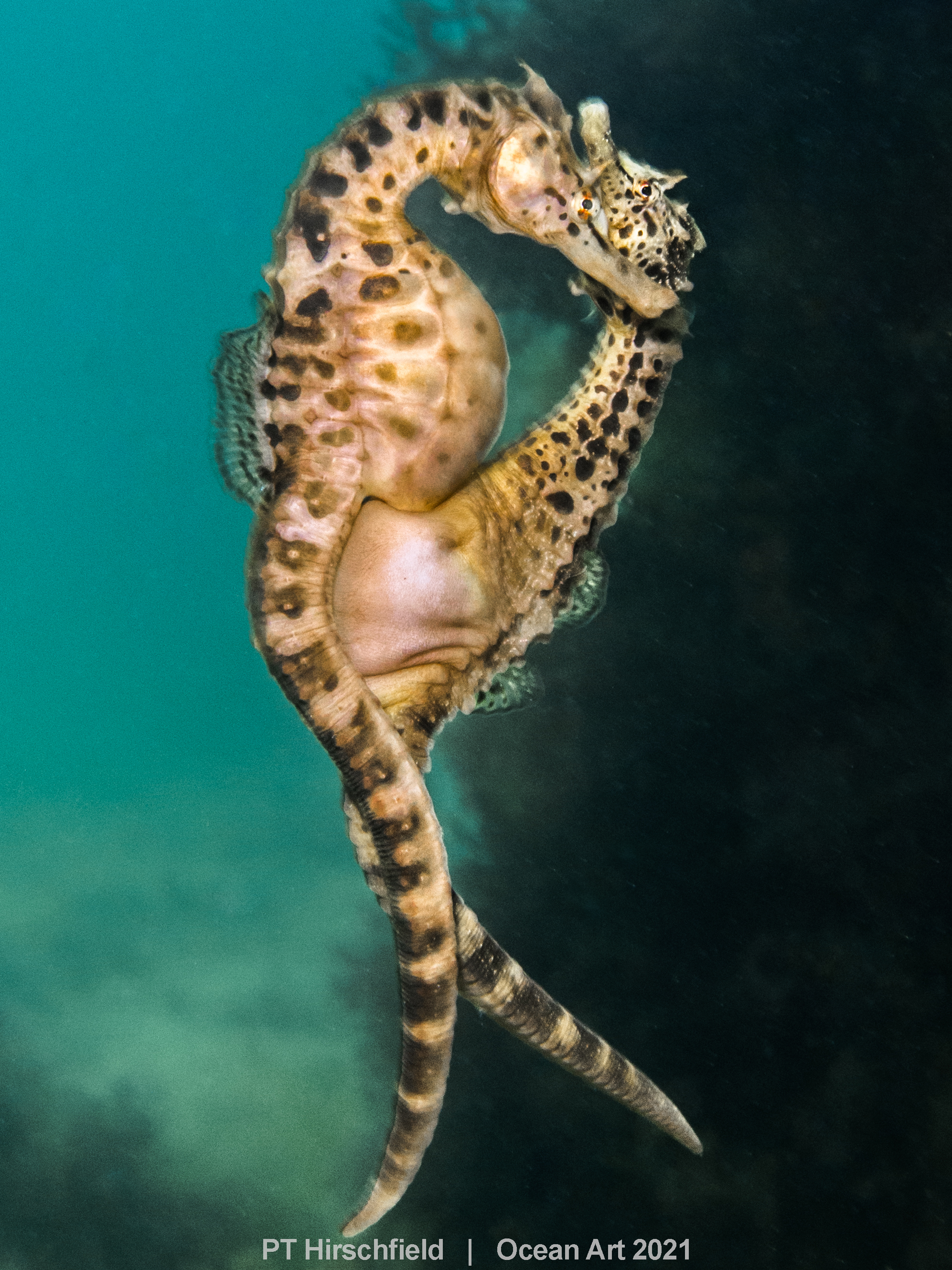
5. Do you have a favorite photo that you’ve taken?
I love taking marine life portraits and behaviour images. Seahorses mating were great to tick off the UW Image Bucket List, but I also just love making portraits of rare and hard to find critters. Red velvet fish are uncommon where I live and I’ve only ever photographed one on a shipwreck in Bass Strait outside of Port Phillip Heads. The vibrance makes it look oversaturated in the editing stage, but I actually toned the saturation down.
6. Do you have a favorite underwater experience?
At the start of a shore dive beneath a local pier, my buddy Ruth and I shared our ‘dive wish’. Hers was to see a seahorse, while I wished to see a Giant Australian cuttlefish. Unbenownst to me, while I was photographing seahorses, Ruth saw a giant Australian cuttlefish literally tap me on the shoulder before swimming around a pier pylon to get my attention. It invited me to swim closely with it, which I did for ten minutes which I videoed and photographed, then led me out to some seagrass where it invited me to die with it. This was twelve months after I’d completed palliative radiotherapy and been given a year to live following my third cancer occurrence. With our air running low, I was torn between following Ruth back to the shore and staying to die with the cuttlefish that was already starting to decay. I briefly waved Ruth good-bye before realising it was not my time to die. It was one of those epiphanous moments where the ocean taught me yet another transformative lesson about the meaning of life and death. To this day, it’s the piece of writing that people still contact me about as having affected and resonated with them most strongly. I wrote more fully about this encounter on my blog here, 'My Most Extraordinary Marine Animal Encounter'
I was also lucky enough on one shore dive entry to stumble across a two metre long, cardboard-thin juvenile ribbonfish swimming in cobra position in two metres of water. It was curious about some bait on the end of a fishing line directly to the side of a pier, so I encouraged it to swim well out of harm’s way as I photographed and videoed it. Later I discovered it was only the third reported sighting of this species in Port Phillip Bay in 108 years; the other two sightings had been dead specimens washed up onto the shore. You just never know what marine life you might come across on any given day or dive!
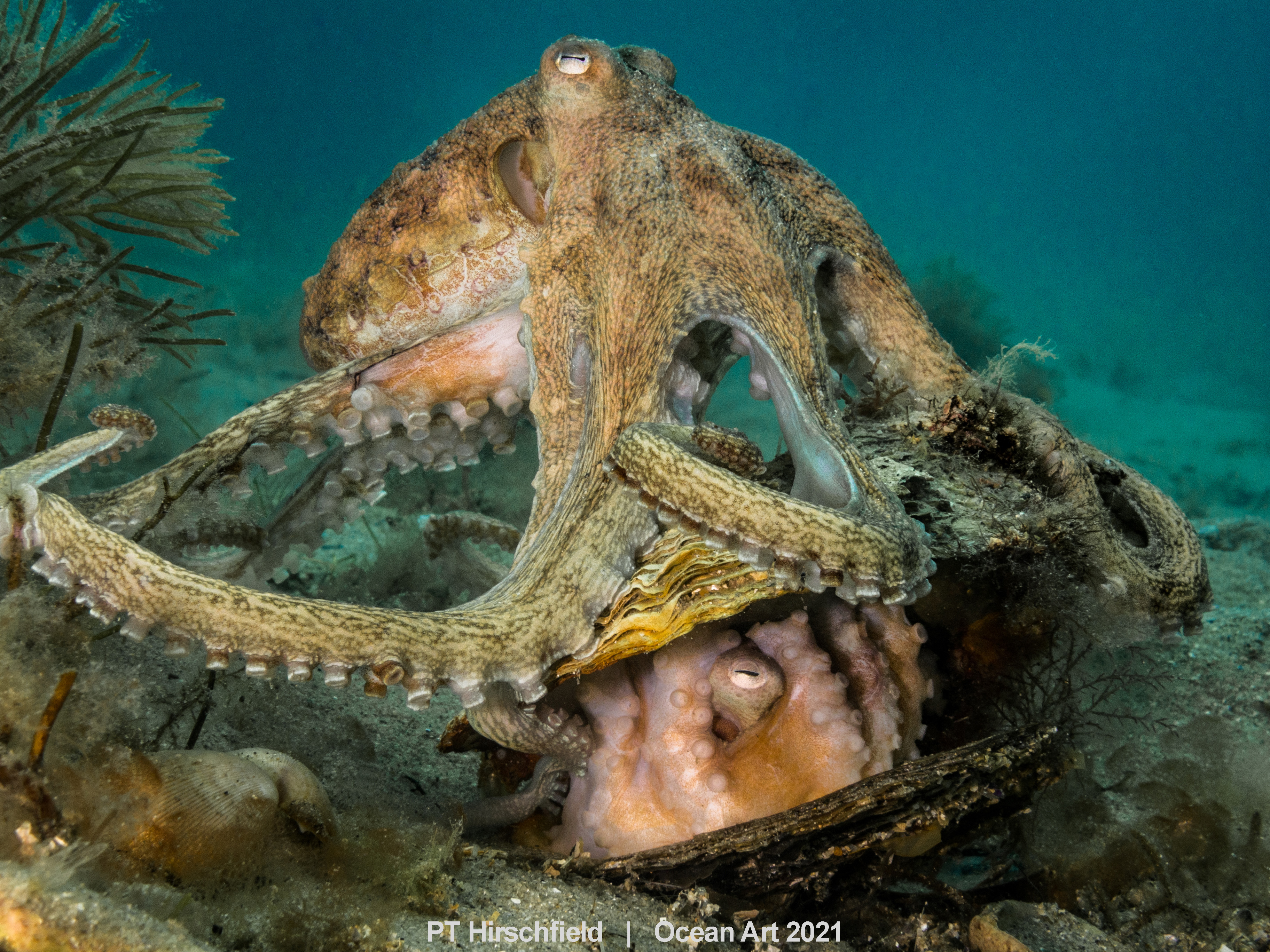
7. What advice do you have for budding explorers and underwater photographers?
One of the keys to improving underwater image-making success is spending as much time in the water as possible. Get to know the resident marine life, where they live and what their natural behaviours are. Once you’re confident with your dive skills and buoyancy, do some research and choose a camera system that you can grow with. I started with a single strobe and dive light. I became so comfortable with my small, versatile, easy-to-travel compact system that the restrictions and limitations of migrating to a chonky DSLR rig that required me to pre-select what size subject I would photograph before the dive never made as much sense to me as sticking with and trying to master my small rig. While I would recommend getting a small system that allows the option of full manual shooting, my regular dive buddy Jules Casey (aka Onebreathdiver) has won global underwater shootouts with a simple Olympus TG6. While a smaller rig may not be optimal for wide angle photography, it can be perfect for super-macro (by adding a diopter) right up to large smooth ray sized subjects. Know your skills. Know your subjects. Know your equipment and how to get the most out of it. Make as many mistakes as you can and learn from them all. And consider entering some underwater photography competitions. These will make you more aware of the current strengths of your images plus areas for improvement. Beyond the possibility of awesome prizes like dive trips and camera gear, competitions help you to focus on continually raising the bar for yourself in terms of quality image construction.
8. What’s next in your adventures?
Last year I experienced the grey nurse shark (aka sand tiger) aggregation with Sundive at Julian Rocks in Australia’s beautiful Byron Bay. This year, I’m super keen to dive with their annual aggregation of leopard sharks at the same location. They can experience up to forty leopards per dive, all swimming in the water column and interacting with divers at close range. The site also offers hundreds of wobbegong sharks year round, plus some rare shark species, eagle rays, vibrant schools of fish and the occasional manta ray. I can’t wait to get back there! Diving the SS Yongala wreck in far north Queensland and diving Christmas Island during their red crab migration season are also very high up on my Bucket List. Photographing a Blanket Octopus is still firmly at the top of my marine creature Bucket List - hopefully one day (fins crossed!)
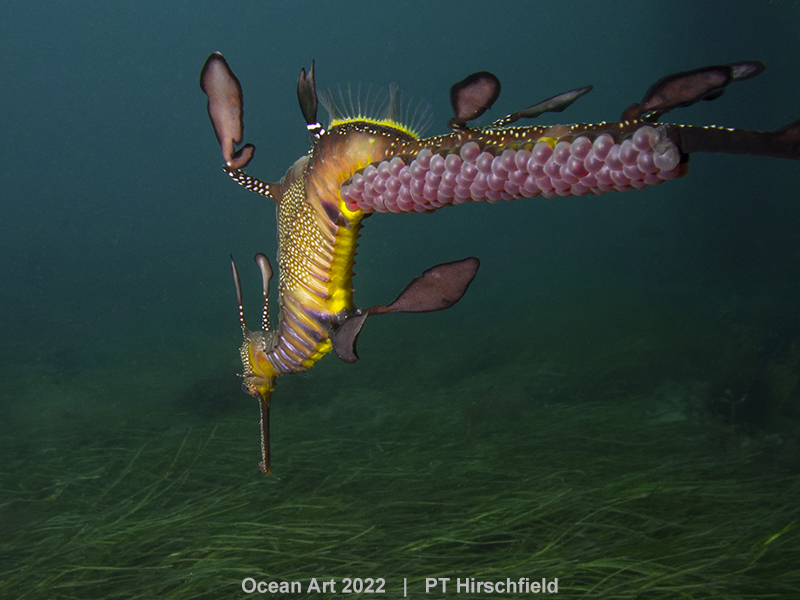
9. Tell us about some of your efforts in conservation.
In 2017 I coordinated an award-winning global campaign to have regulations changed regarding the safeguarding of stingrays and fiddler rays (aka banjo sharks) across my home state of Victoria. Director Sam Riley made a short film titled ‘I Am Ocean: PT Hirschfield’ which featured in the Ocean Film Festival and broader international short film festival circuit in 2022. This film tells the story of the Rays Awareness campaign, alongside the story of my cancer diagnosis and how I’ve navigated that towards better health through regular diving.
I’ve also contributed to some advocacy work leading to improved regulations regarding the recently emerged targeting of the Great Australian spider crabs (which are widely considered to be unpalatable) during their annual moulting aggregations when they are most vulnerable. Despite many decades of revered celebration of this natural phenomenan, this challenge is ongoing. In both cases, still and video image making have been some of the most powerful catalysts for awareness and change.
10. What do you think people can learn from the Ocean, diving, and/or photography? What has your time in the Ocean taught you?
Even after 1600 dives, every dive teaches me something new about life and underwater photography. The ocean has taught me patience, curiosity, the art of self reflection, the inevitability of change and the opportunity to be proactive when we are in positions to observe issues of concern which are often of human origin and which usually require human proactivity and intervention. The Ocean is not ‘Another World Down There’ as so many non-divers assume. It’s our world, one that we all need to be active custodians and advocates for. Photography can be a powerful medium for showing the broader public what lies beneath the surface that needs to be celebrated and preserved. It’s a privilege to be a voice for the Ocean and one that every diver has the opportunity to embrace.
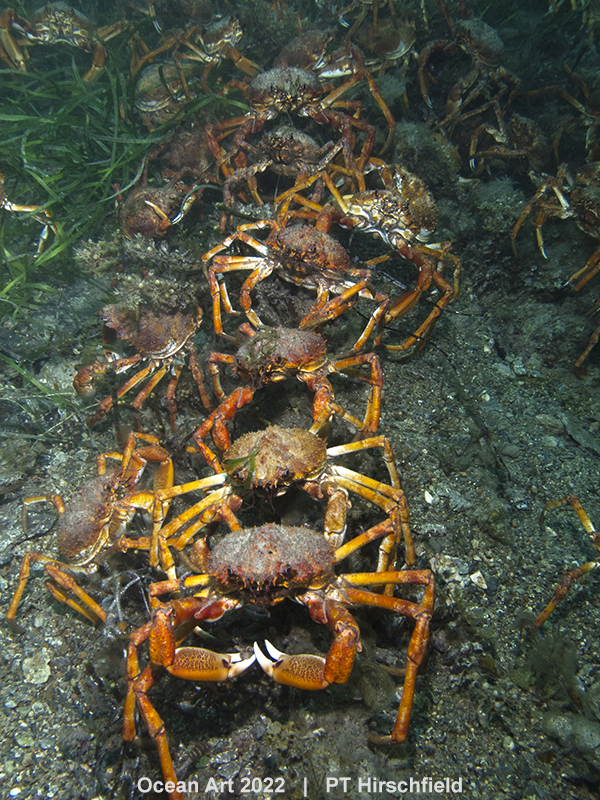
11. What is Pink Tank Scuba? Feel free to put in a plug for yourself!
I used to be fairly proactive with sharing my images and videos on my Pink Tank Scuba Facebook, Instagram and YouTube, along with my ‘Scuba vs Tumour’ blog at pinktankscuba.com . Essentially, I share my images and encourage people that, no matter what challenges they may be facing in life, to try to persevere with a positive outlook towards the best possible outcomes. Nowdays, I tend to share images less frequently online, and mainly keep my images for the articles I write and occasional competitions. If you like octopuses, seahorses, sea dragons, spider crabs, nudibranchs and other predominantly temperate water species, feel free to visit me at Pink Tank Scuba. (If you like massive stingrays and moulting spider crabs, my YouTube video ‘Spider Crab Molting Before Being Eaten by Stingray’ with 3.9 million views would probably be a good place to start, (or try the version edited to music titled ‘Molt Hard, Die Harder’).
12. Plans for the future?
A lot of people wrote me off for dead in 2014, but I fully intend to ‘Outlive the Vultures’ and to ‘Live to Dive Another Day’, making marine life images at every opportunity. I’ll continue to write for scuba magazines alongside several fiction and non-fiction writing projects that keep me busy during surface intervals which may or may not ever see the light of day.
Gear-wise, it’s taken me a really long time to track down an upgrade rig that meets all of my preferences (in particular, insane battery life!). But there’s a mirrorless camera that’s just come onto the market with battery life able to keep up with my 3-4 hour shallow dives in summer, so I’m excited to start investigating the possibility of a long overdue upgrade!

RECOMMENDED ARTICLES
SUPPORT THE UNDERWATER PHOTOGRAPHY GUIDE:
The Best Service & Prices on u/w Photo Gear
 Visit Bluewater Photo & Video for all your underwater photography and video gear. Click, or call the team at (310) 633-5052 for expert advice!
Visit Bluewater Photo & Video for all your underwater photography and video gear. Click, or call the team at (310) 633-5052 for expert advice!
The Best Pricing, Service & Expert Advice to Book your Dive Trips
 Bluewater Travel is your full-service scuba travel agency. Let our expert advisers plan and book your next dive vacation. Run by divers, for divers.
Bluewater Travel is your full-service scuba travel agency. Let our expert advisers plan and book your next dive vacation. Run by divers, for divers.




